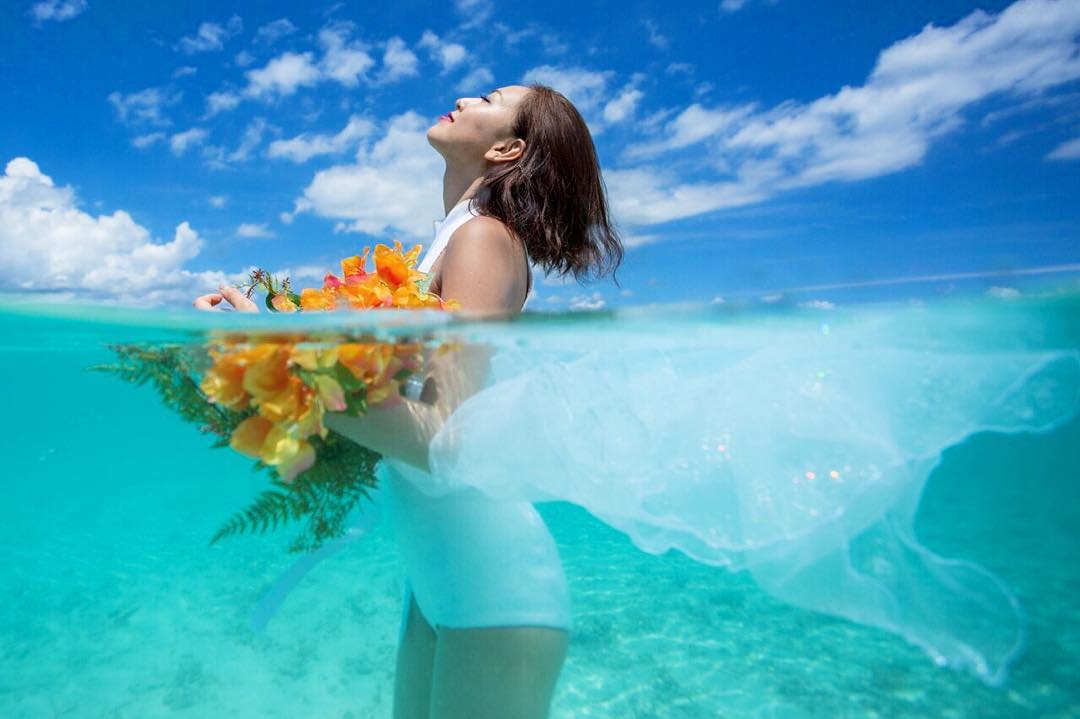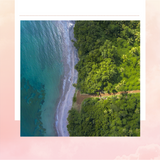Sun Is Up: How to Apply Sunscreen
Posted on July 23 2018
Sun is up: How to Apply Sunscreen
There is nothing more important in summer than using the right sunscreen.
Today’s market is filled with various kind of sunscreen such as water-resistant, mineral sunscreen, chemical sunscreen, spray sunscreen, broad spectrum sunscreen…that makes it more difficult to choose the best sunscreen for us.
Since we were little kids, we hear it all the time: don’t forget to apply your sunscreen before hitting the water/park/insert outdoor location. It has become a habit for those wandering around the planet’s beaches since the first synthetic sunscreen in 1928, but keeping the sun protection is a concern that Japanese women have had forever. Although their main motive is to keep a white complexion. Plus, they are also concerned about some diseases such as skin cancer.

credit: Kohei Kawabata
Contextualizing fair skin in Japan
Just like beauty, many aspects of the Japanese culture find their complexity in the many layers that compose their structure. White skin in Japan is not about mimicking any sort of Western ideal.
It is deeply rooted from ancient times far before the Portuguese started to evangelize the archipel in the 16th century. Writer Junichiro Tanizaki writes, in his 1933 book In Praise of Shadows, that women were kept in the darkness of their homes because excellence and beauty were found in discretion and humility.
White was then a sign of beauty not because it was related to the physical attributes and features of Westerners, but because it was a proof of humility - and social status. Like everywhere else on planet Earth, for centuries, the poor were working outside and their skin was burnt by the sun while the rich enjoyed a more leisured, indoor lifestyle that kept their skin from tanning.
Japanese sun-care today
Today, women still pursue a fair, « china-like skin » in Japan. Exceptions come and go especially under the form of subcultural movements such as the gyaru culture: young girls trying to escape a society that they find too normative, by going against general social postulates (such as white skin). The general concept, however, is to have a bright complexion.
They protect their skin from the sun at all costs: they use sun-protective clothing such as umbrellas during summer, wear hats, elbow-length gloves – especially when driving – and rarely wear a bikini on the beach. (they go for long-sleeved tops and regular bottoms, the toughest go for a challenging pair of denim jeans – denim in the water guys!!!).
This quite short cultural brief is not about promoting white skin, but about linking today’s misconceptions about Japanese culture regarding this. I am in no way saying (nor do I think) that white skin should prevail. However, since we are discussing the Japanese beauty culture together, I thought it was important for us to remember where today’s thorough use of sunscreen in Japan is coming from.
All UV Shields Up
Keeping away from the burning sun rays has more benefits other than having a white skin. For example, you can prevent cancer, or you can delay the beautiful birth of wrinkles and age spots. But do you know how to pick the appropriate sunscreen according to your skin type?
People often think that there is an all-in-one solution for these kind of general problems, but there is not. And there are truly some things you need to understand (like the difference between UVB and UVA) in order to complete this mission. Here is a list of what you should look for in a good sun shield.
A Light Texture

Source: Precious Magazine
Keep that in mind: the thinner the texture, the better the absorption. A lotion is better than a cream, a spray better than a lotion and a mist better than a spray! If you’re really into creams, you must try a watery formula like this AQUA UV from HACCI (main pro: leaves your skin feeling the softest).
It’s a white cream that turns liquid when in contact with the skin, hence avoiding the basic downside of most creamy formulas that leaves a whitish layer and turns you into a very pale being. (Also, a thick cream takes longer to absorb, which is very inconvenient.) And because progress is one cool thing: light textures in 2018 also boast special functionalities, such as soothing the skin from stress or from too much blue light exposure.
A High for SPF for UVB
UVB are the ultraviolet rays of the sun that cause sunburn on the surface. They’re different with UVA (See below). The higher the sunscreen SPF (sun protecting factor) on your bottle, the thicker the shield will be. Think of a SPF as a fraction of the intensity of the sun-ray that tries to get you all reddened. SPF 20 would then mean that 1 out 20 UVB rays will reach your skin, but also that it would take 200 minutes for your skin to start burning. Assuming that you reapply sunscreen every 2 hours (120 minutes), the higher the SPF, the fewer UVB rays can get to you! The key is reapplying the sunscreen and not solely depending on high SPF.
Note that SPF only helps in preventing sunburn or sun damage but not skin damage, drought nor wrinkle formation. If you’re very pale (i.e lack melanin), you have no choice other than religiously applying a SPF50++. However, the darker the skin, the higher the concentration in melanin. Melanin produces its very own anti-UVB shield.
As Japanese women want to keep a very pale complexion, for a long time they’ve been mixing strong SPF products with classic whitening skincare items such as a serum, or a cream. Innovative techniques now allow the industry to mix both. As you can see in this WHITISSIMO by brand Pola, which not only protects from UVB and UVA, but also eradicates dullness and controls the secretion of melanin.

Source: Precious Magazine
A high PA for UVA
The common belief had us thinking that only SPF was ever important. But the real danger with sun is UVA – these radiations, I swear, are your worst enemy. Unlike UVB, UVA rays seep into the deepest layers of your skin, right there where the whole structure of your dermis is being fabricated. It attacks elasticity and dries out all your tissues. UVA rays are the cause for dryness, wrinkles, dehydration, dry skin, sensitive skin and all these skin troubles that come with intense sun exposure.
In order to fight UVA, you need to focus on the PA of your product. It goes from PA+ to PA++++. I would recommend you never buy a sunscreen which doesn’t explicitly display this information. (Note: for western products, look for the words “Broad Spectrum). Fortunately, it is now pretty common and most brands have revised their labels to be up-to-date with scientific progress as well as the increase of general awareness regarding this matter.
Bonus Sun-care tips:
- Use sunscreen every single day of the year because winter radiations are as much intense as in summer, if not worse!
- Never forget to fully hydrate and soothe after a long exposure like a day at the beach.
- Drink a lot of water to prevent dehydration (shot glass is not enough at all!)
- Apply your sunscreen 30 minutes before leaving outdoors for optimal protection.
- Opt for a waterproof formula should you swim (water-resistant sunscreen)

Nawael Khelil
An enthusiast of skincare, blazer jackets, cute animals and food,
she’s passionate about the questions related to beauty with
its dynamics and perceptions especially in Asia. Former fashion and beauty editor in Seoul, she is now based in Paris.



